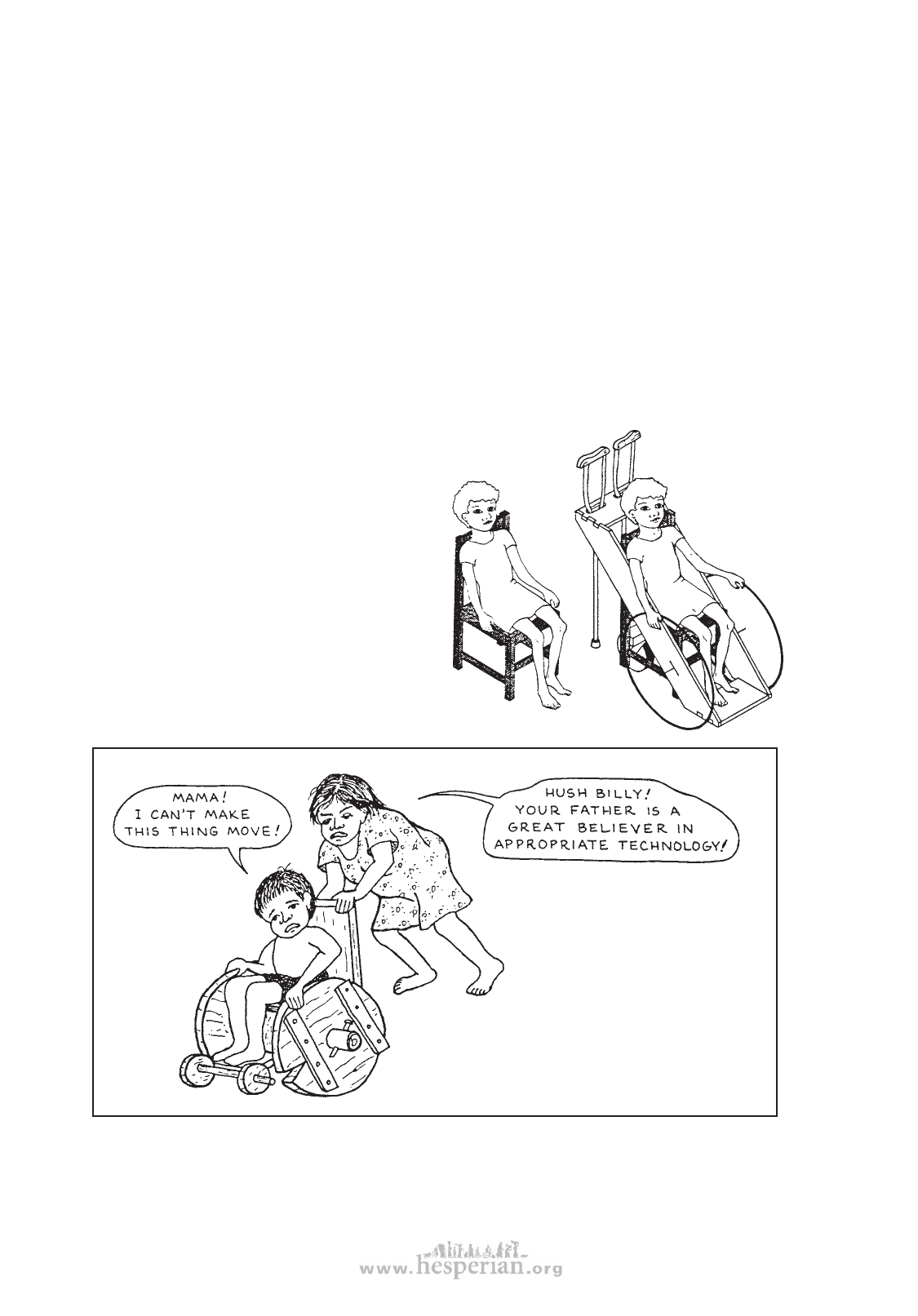
592 chapter 64
Keeping cost down and quality up
For many families, a wheelchair can be a great or even impossible expense. There
are many ways to keep costs down. But be careful. Some low-cost choices may make
the chair too clumsy, weak, or unsafe. Other low-cost choices may actually increase
the chair’s usefulness and life. For example, a very useful, long-lasting wheelchair can
be made of wood—or from a cheap wooden chair. Even wheels made of wood (if
made well) may work well and last a long time. But, making the hubs or bearings of
wood usually leads to trouble. Standard wheelchair wheel bearings are very expensive.
However you can often get strong, high-quality, used metal bearings free or very cheap
at electrical appliance repair shops or auto repair shops.
Factory-made or homemade wheelchairs?
Often you can save money by making your own wheelchair or by asking a local
craftsperson to make one. Also, a homemade chair design can be more easily adapted
to your child’s particular needs.
On the next pages we give information
that may help you decide about different
wheelchairs and effective low-cost ways
to make them.
You can make a fairly effective
low-cost wheelchair by attaching bicycle
wheels or wooden wheels to an ordinary
wooden chair. Also, it is easier to
attach special aids or supports to a
wooden chair than to a metal chair.
This design is adapted from Healthlink
Worldwide’s booklet, “Personal Transport
for Disabled People” (see p. 604).
Any wheelchair is better than
none—but sometimes not
much better. Look for low-cost
alternatives that make a chair
better—not worse.
REMEMBER: A wheelchair needs to satisfy the rider—not just the maker. Before
(and after) buying or making a chair, think carefully about the different features that
will help it best meet the needs of the particular child and family.
Disabled village Children